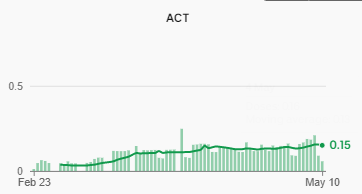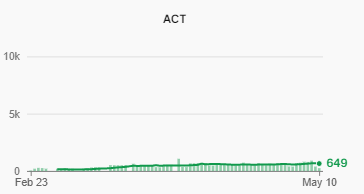Novavax will also accelerate the vaccination rate once it hits.
While the vaccine’s efficacy rate is significantly lower against the South African variant than the original strain, there are other factors to consider in a real-world context.
www1.racgp.org.au
However even without Novavax, the rate is continuing to accelerate.
Commodore ERIC YOUNG
Date published:
10 May 2021
Thank you, Minister. Good afternoon. Last week, we had a major boost to our vaccination program, in which we substantively implemented the direction from National Cabinet, which predominantly limited the use of the Pfizer vaccine to those under 50.
Now, that included bringing forward our next phase of vaccinations to those aged 50 and over, while also ensuring that other cohorts were offered the vaccine as soon as possible.
In doing so, as the Minister said, last week was our largest week, with 400,066 vaccines administered.
This week, we are further increasing the allocations of vaccines to states and territories and our general practices, with 130,000 additional doses of Pfizer vaccine going to the states and territories, nearly doubling their allocations, and an additional 270,000 doses of AstraZeneca vaccine going to primary care.
That will allow us to triple the allocations of doses from 50 to 150 doses, for our nearly 3000 low-volume general practices, and double the allocations from 100 to 200 doses for our 1000 medium-volume practices.
Today I'd like to give my operational update, and again, I’ll do that in three parts: the supply of the vaccine, the distribution of the vaccine, and the administering of the vaccine. In terms of supply, this week, the Therapeutic Goods Administration will conduct sample testing and batch release of 351,000 doses of Pfizer vaccine which arrived onshore at 6:50 this morning.
They will also conduct batch release and sample testing for 1 million doses of the onshore, CSL-produced AstraZeneca vaccine. For the first time this week, CSL producing four batches of AstraZeneca vaccine.
In terms of distribution of the vaccine, last week, we successfully distributed 560,000 doses of the vaccine. Only one out of the many thousands of orders from last week was unable to be completed and it will be completed today.
This week, on the back of the additional allocations and amid growing supplies, we’ll be distributing over 900,000 doses of vaccines, with more than 5000 orders going out across the country. That is our biggest week by far.
So this week, we are focused on delivery and ensuring that every one of those vaccines gets to where it needs to. In short, we’re now providing more vaccines to protect more Australians.
In terms of administering of the vaccine, last week, again as the Minister said, we had our largest week with 402,606 doses of vaccine administered, taking our total now to 2,663,221 doses of vaccine administered.
An analysis of that data indicates that the rate of administration is increasing. Last week, the weekday average was 73,000 doses per day, which was up 7000 doses per day from the week before.
That comes with a growing use of the Pfizer vaccine for those aged under 50, and already a positive uptake in those aged 50 and over.
Last week, 252,000 doses of vaccine were administered through more than 4600 primary care sites across the country. Coupled with the sites from the states and territories, we now have 5200 sites administering vaccines across the country.
For our vaccine workforce service providers, again, as has been the case the last couple of months, our focus continues to be on those most vulnerable in our population, those older Australians in residential aged care facilities.
We’ve now conducted 1909 first dose visits to residential aged care facilities that accounts for 74 per cent of the facilities. We also conducted 1330 second dose visits or 52 per cent of all residential aged care facilities.
This week, we continue to focus on making sure all eligible Australians know how and where to access a vaccine through a combination of targeted communications but also through ongoing updates to the Eligibility Checker and the Vaccine Clinic Finder.
We’ve now had more than 4.3 million visits to the eligibility checker. But every single day, our focus remains on ensuring the vaccines we have are available across the country when and where required to protect those most vulnerable Australians.
Read the transcript of the press conference with Minister Hunt and Commodore Eric Young with an update on update on the vaccination rollout, COVID-19 cases on 10 May 2021.

www.health.gov.au
GP's are from 17 May getting more doses, and more vaccination hubs are yet to open as well. And sooner or later Pharmacies will join in.
As GPs have already delivered more than half the vaccinations , despite joining the program late, increasing their supply will be helpful to accelerating the rate.























